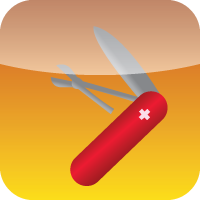Team:Paris Bettencourt/Achievements
From 2012.igem.org
| (18 intermediate revisions not shown) | |||
| Line 23: | Line 23: | ||
** [http://partsregistry.org/Part:BBa_K914009 K914009] : P1003* Ser133->Amber Codon : kanamycin gene resistance with 1 amber mutation | ** [http://partsregistry.org/Part:BBa_K914009 K914009] : P1003* Ser133->Amber Codon : kanamycin gene resistance with 1 amber mutation | ||
| - | Both part were well [ | + | Both part were well [https://2012.igem.org/Team:Paris_Bettencourt/Semantic_containment#Results characterized] and works well. For the second parts, we show that as expected, one mutation is quite leaky, although it works qualitatively, but one mutation is not enough if we want to release such parts in nature. Other reasons emphasize this observation, notably the weakness of being at one mutation to recover the protein functionality. |
* Creation of a new category in the part registry : [http://partsregistry.org/Biosafety Semantic containment]. The aim of this category is to let people improving each part by adding for instance other amber mutations to existing part to increase the containment. | * Creation of a new category in the part registry : [http://partsregistry.org/Biosafety Semantic containment]. The aim of this category is to let people improving each part by adding for instance other amber mutations to existing part to increase the containment. | ||
| + | <div id="boston"> | ||
| + | '''Achievements : ''' | ||
| + | * Construction and characterization of 1 biobrick : | ||
| + | ** [http://partsregistry.org/Part:BBa_K914018 K914018] : P1003** Ser133 & Ser203 ->Amber Codon : kanamycin gene resistance with 1 amber mutation | ||
| + | * Construction of 1 plasmid backbone : | ||
| + | ** [http://partsregistry.org/Part:BBa_K914012 K914012] : pSB1A2 with one Amber Codon : Ampicillin gene resistance with 1 amber mutation | ||
| + | </div> | ||
</td> | </td> | ||
</tr> | </tr> | ||
</table> | </table> | ||
| + | |||
| Line 77: | Line 85: | ||
* Demonstration that all 3 generators (K914005, K914007, K914008) work and express I-SceI meganuclease in cells. [https://2012.igem.org/Team:Paris_Bettencourt/Restriction_Enzyme#Measuring_the_efficiency_of_I-SceI_.28Cloned_parts.29 [Read more]] | * Demonstration that all 3 generators (K914005, K914007, K914008) work and express I-SceI meganuclease in cells. [https://2012.igem.org/Team:Paris_Bettencourt/Restriction_Enzyme#Measuring_the_efficiency_of_I-SceI_.28Cloned_parts.29 [Read more]] | ||
| - | * Characterization of 2 biobricks from TUDelft [https://2012.igem.org/Team:Paris_Bettencourt/Restriction_Enzyme# | + | <div id="boston"> |
| + | * '''[https://2012.igem.org/Team:Paris_Bettencourt/Restriction_Enzyme#New_Results [Updated for Boston] ]''' : Characterization of 2 biobricks from TUDelft [https://2012.igem.org/Team:Paris_Bettencourt/Restriction_Enzyme#Measuring_the_I-SceI_efficiency_.28TUDelft_parts.29 [Read more]]: | ||
** [http://partsregistry.org/Part:BBa_K175041 K175041]: p(LacI) controlled I-SceI homing endonuclease generator | ** [http://partsregistry.org/Part:BBa_K175041 K175041]: p(LacI) controlled I-SceI homing endonuclease generator | ||
** [http://partsregistry.org/Part:BBa_K175027 K175027]: I-SceI restriction site | ** [http://partsregistry.org/Part:BBa_K175027 K175027]: I-SceI restriction site | ||
| + | </div> | ||
* [https://2012.igem.org/Team:Paris_Bettencourt/Restriction_Enzyme#Characterization_of_pRha Characterization ] of the L-rhamnose-inducible promoter ([https://2012.igem.org/Team:Paris_Bettencourt/Restriction_Enzyme#Design pRha]). | * [https://2012.igem.org/Team:Paris_Bettencourt/Restriction_Enzyme#Characterization_of_pRha Characterization ] of the L-rhamnose-inducible promoter ([https://2012.igem.org/Team:Paris_Bettencourt/Restriction_Enzyme#Design pRha]). | ||
</tr> | </tr> | ||
| Line 103: | Line 113: | ||
* [https://2012.igem.org/Team:Paris_Bettencourt/Delay#Refined_characterization_of_the_Yokobayashi_et_al._sRNA_repression_plasmidic_device Characterization] of the sRNA repression system of Yokobayashi ''et al.'' | * [https://2012.igem.org/Team:Paris_Bettencourt/Delay#Refined_characterization_of_the_Yokobayashi_et_al._sRNA_repression_plasmidic_device Characterization] of the sRNA repression system of Yokobayashi ''et al.'' | ||
* Cloning of the yiaGp stationary phase promoter | * Cloning of the yiaGp stationary phase promoter | ||
| + | <div id="boston"> | ||
| + | '''Achievements :''' | ||
| + | * Partially biobricked sRNA system : | ||
| + | **[http://partsregistry.org/Part:BBa_K914017 K914017] stationary phase promoter Yiagp | ||
| + | **[http://partsregistry.org/Part:BBa_K914016 K914016] coding sequence of Colicin E2 | ||
| + | </div> | ||
| + | |||
</td> | </td> | ||
</tr> | </tr> | ||
| Line 149: | Line 166: | ||
'''Achievements:''' | '''Achievements:''' | ||
| - | *Construction of colicin-like toxin by fusing Colicin | + | *Construction of colicin-like toxin by fusing Colicin D based "Synthetic Import Domain" with DNAse domain of colicin E2 |
*Constructon of FseI, I-SceI, LuxR active fragment, LacZ alpha fragment, PyrF and T7 RNA polymerase fused to the two types of "Synthetic Import Domains" from Colicin E2 and Colicin D | *Constructon of FseI, I-SceI, LuxR active fragment, LacZ alpha fragment, PyrF and T7 RNA polymerase fused to the two types of "Synthetic Import Domains" from Colicin E2 and Colicin D | ||
*Proof of concept with LacZ alpha fragment fused to "Synthetic Import Domain" from Colicin D | *Proof of concept with LacZ alpha fragment fused to "Synthetic Import Domain" from Colicin D | ||
| Line 176: | Line 193: | ||
*we performed [https://2012.igem.org/Team:Paris_Bettencourt/Encapsulation#Bristol_2010_Nitrate_Reporter additional characterization] of the Bristol 2010 nitrate reporter [http://partsregistry.org/Part:BBa_K381001 K381001] | *we performed [https://2012.igem.org/Team:Paris_Bettencourt/Encapsulation#Bristol_2010_Nitrate_Reporter additional characterization] of the Bristol 2010 nitrate reporter [http://partsregistry.org/Part:BBa_K381001 K381001] | ||
* Efficient killing by colicin producing cells was achieved within the beads. | * Efficient killing by colicin producing cells was achieved within the beads. | ||
| + | <div id="boston"> | ||
| + | '''Achievements : ''' | ||
| + | *Covalently stabilized alginate beads by polyethyleneimine and glutaraldehyde [https://2012.igem.org/Team:Paris_Bettencourt/Encapsulation#Covalent_Stabilization_of_Alginate_Beads treatment]. | ||
| + | *Demonstrated cells' ability to [https://2012.igem.org/Team:Paris_Bettencourt/Encapsulation#Blue-White_Screening_Assay propagate and express proteins] within stabilized alginate beads. | ||
| + | *Performed [https://2012.igem.org/Team:Paris_Bettencourt/Encapsulation#Cell_Containment_Assay cell containment assay] that demonstrated stabilized beads' enhanced cell entrapment capacity in phosphate buffer. | ||
| + | |||
| + | </div> | ||
</td> | </td> | ||
</tr> | </tr> | ||
</table> | </table> | ||
| + | |||
| + | |||
| + | <div id="boston"> | ||
| + | |||
| + | |||
| + | '''Safety Assessment''' [[File:Paris_Bettencourt_2012_Safety-assessment.png|frameless|link=https://2012.igem.org/Team:Paris_Bettencourt/Modeling|right|75px]] | ||
| + | |||
| + | |||
| + | '''Aims''' | ||
| + | |||
| + | Safety is an important issue in synthetic biology, especially for environmentally related projects. We started to answer the question, “how safe is safe enough?” by involving experts, the public and our fellow scientists, and also by building biosafety devices. However, to really answer the question, we need first to ask ourselves a more basic question, “how do we measure safety?”. As we see synthetic biology as an engineering approach to biology, we could think about the adaptation of safety engineering, a well studied engineering subset, that has been widely use to minimize risks in many fields of engineering, such as mechanical engineering, aircrafts, and manufactures. However, the risks they face are surely different from the risks of synthetic biology. | ||
| + | |||
| + | '''Objectives''' | ||
| + | * Adapting existing safety assessment tools for synthetic biology | ||
| + | * Proposing new methods to assess safety in synthetic biology | ||
| + | |||
| + | </div> | ||
| + | |||
| + | |||
==Human Practice== | ==Human Practice== | ||
| Line 187: | Line 230: | ||
<b>Aims</b> | <b>Aims</b> | ||
| + | |||
| + | |||
Human concerns arose organically during the construction of the bWARE containment system, and human practices were intrinsic to every stage of our project. In designing and building our best genetic containment system, we often encountered limits on the ability of science alone to measure our performance. When is a biosafety system safe enough? The answer to this question is partially scientific, to the extent that horizontal gene transfer events can be observed and modeled. But the answer is also social, because ultimately the public will decide if a biosafety system works well enough to use. The only way for us to know if bWARE is a success is in conversation with experts and the community. | Human concerns arose organically during the construction of the bWARE containment system, and human practices were intrinsic to every stage of our project. In designing and building our best genetic containment system, we often encountered limits on the ability of science alone to measure our performance. When is a biosafety system safe enough? The answer to this question is partially scientific, to the extent that horizontal gene transfer events can be observed and modeled. But the answer is also social, because ultimately the public will decide if a biosafety system works well enough to use. The only way for us to know if bWARE is a success is in conversation with experts and the community. | ||
| Line 227: | Line 272: | ||
You can find the full list of proposals [https://2012.igem.org/Team:Paris_Bettencourt/Human_Practice/Report#III_Proposals here] | You can find the full list of proposals [https://2012.igem.org/Team:Paris_Bettencourt/Human_Practice/Report#III_Proposals here] | ||
| + | |||
| + | <div id="boston"> | ||
| + | '''Achievements : ''' | ||
| + | * Team aWAREness | ||
| + | During this summer, all of us gained knowledge in synthetic biology and learned lab skills, but that wasn't all. From the beginning of our brainstorming sessions, safety questions came up in our discussions. Our mutual interest in this topic lead us to center our project on safeguard systems and human practices related to public awareness and risk assesssment. This meant that we had to work hard not only on our wet lab project, but also on human practices. To our delight, this effort resulted not only in community outreach, but also changed our own opinion on biosafety in the context of synthetic biology. We feel that our Human Practice project changed each and every one of us.[https://2012.igem.org/Team:Paris_Bettencourt/Human_Practice/perception Here are our personal perceptions.] | ||
| + | </div> | ||
</td> | </td> | ||
Latest revision as of 00:05, 27 October 2012
|
Semantic containment
Aims
System
Achievements :
Both part were well characterized and works well. For the second parts, we show that as expected, one mutation is quite leaky, although it works qualitatively, but one mutation is not enough if we want to release such parts in nature. Other reasons emphasize this observation, notably the weakness of being at one mutation to recover the protein functionality.
Achievements :
|
|
Suicide system
Aims : Implement a kill-switch that features population-level suicide and complete genome degradation. System : A synthetic toxin-anti-toxin system based on the wild type Colicin E2 operon. Achievements : We showed that Colicin E2 cells induce cell death in sensitive populations, and that these sensitive populations can be protected by providing them with our engineered immunity protein.
Part K914001 is well characterized and provides immunity to sensitive cells against the Colicin E2 activity protein, but is leaky. Part K914002 is promoterless and allows users to easily plug in the appropriate promoter for their desired purpose.
|
|
Restriction Enzyme System
Aim: To design a plasmid self-digestion system. Experimental System: We are testing different combinations of promoters and restriction enzymes. We have to characterize both the promoters (by measuring the expression of RFP) and the restriction enzymes (by measuring killed cells). Achievements :
|
|
Delay System
Aim : A programmed delay will allow the cell to perform its intended function before our DNA-degrading suicide machinery is expressed. Experimental system: We used two different approaches to create this delay. The first one is based on the gradual dilution of a regulatory transcription factor. The second one makes use of a stationary-phase specific promoter. Both systems eventually result in the expression of the restriction enzyme I-SceI. In the final design, I-SceI cleaves the antitoxin gene, ultimately dooming the cell. Each step in this causal sequence contributes to the overall delay in the system.
Achievements :
|
|
MAGE
Aims : Removal of four FseI restriction sites from E. coli MG1655 genome. Experimental System: Using multiplex automated genome engineering (MAGE) - a technique capable of editing the genome by making small changes in existing genomic sequences. Achievements: Proof of concept by introducing a stop codon in the middle of the lacZ gene |
|
Synthetic Import Domain
Creation of a novel protein import mechanism in bacteria.
Exploit the natural Colicin import domain fused to any protein at will, dubbed here: "Synthetic Import Domain". Achievements:
|
|
Encapsulation
Aim: Harness bacteria-containing gel beads to assure cell containment and complement activity of genetic safety systems. Experimental system: Bacterial cells are encapsulated in alginate beads. We used a cell containment assay based on plating to assess the release of cells from alginate beads. In addition, we aimed at improving the entrapment of cells through stabilization by polyethyleneimine and covalent cross-linkage by glutaraldehyde. Achievements:
Achievements :
|
Aims
Safety is an important issue in synthetic biology, especially for environmentally related projects. We started to answer the question, “how safe is safe enough?” by involving experts, the public and our fellow scientists, and also by building biosafety devices. However, to really answer the question, we need first to ask ourselves a more basic question, “how do we measure safety?”. As we see synthetic biology as an engineering approach to biology, we could think about the adaptation of safety engineering, a well studied engineering subset, that has been widely use to minimize risks in many fields of engineering, such as mechanical engineering, aircrafts, and manufactures. However, the risks they face are surely different from the risks of synthetic biology.
Objectives
- Adapting existing safety assessment tools for synthetic biology
- Proposing new methods to assess safety in synthetic biology
Human Practice
|
Aims
Human concerns arose organically during the construction of the bWARE containment system, and human practices were intrinsic to every stage of our project. In designing and building our best genetic containment system, we often encountered limits on the ability of science alone to measure our performance. When is a biosafety system safe enough? The answer to this question is partially scientific, to the extent that horizontal gene transfer events can be observed and modeled. But the answer is also social, because ultimately the public will decide if a biosafety system works well enough to use. The only way for us to know if bWARE is a success is in conversation with experts and the community. We propose and implement new ways for iGEM to organize and present biosafety information, both for scientists and the public. We believe our reforms to the BioBrick registry will help synthetic biologists to find the best biosafety tools for their application. We also imagine the beginnings of a quantitative, context-specific biosafety database serving citizen scientists. Practical safety data will feed an informed public forum.
You can find the full list of conclusions here Main Proposals
You can find the full list of proposals here Achievements :
During this summer, all of us gained knowledge in synthetic biology and learned lab skills, but that wasn't all. From the beginning of our brainstorming sessions, safety questions came up in our discussions. Our mutual interest in this topic lead us to center our project on safeguard systems and human practices related to public awareness and risk assesssment. This meant that we had to work hard not only on our wet lab project, but also on human practices. To our delight, this effort resulted not only in community outreach, but also changed our own opinion on biosafety in the context of synthetic biology. We feel that our Human Practice project changed each and every one of us.Here are our personal perceptions. |
 "
"


 Overview
Overview Delay system
Delay system Semantic containment
Semantic containment Restriction enzyme system
Restriction enzyme system MAGE
MAGE Encapsulation
Encapsulation Synthetic import domain
Synthetic import domain Safety Questions
Safety Questions Safety Assessment
Safety Assessment





